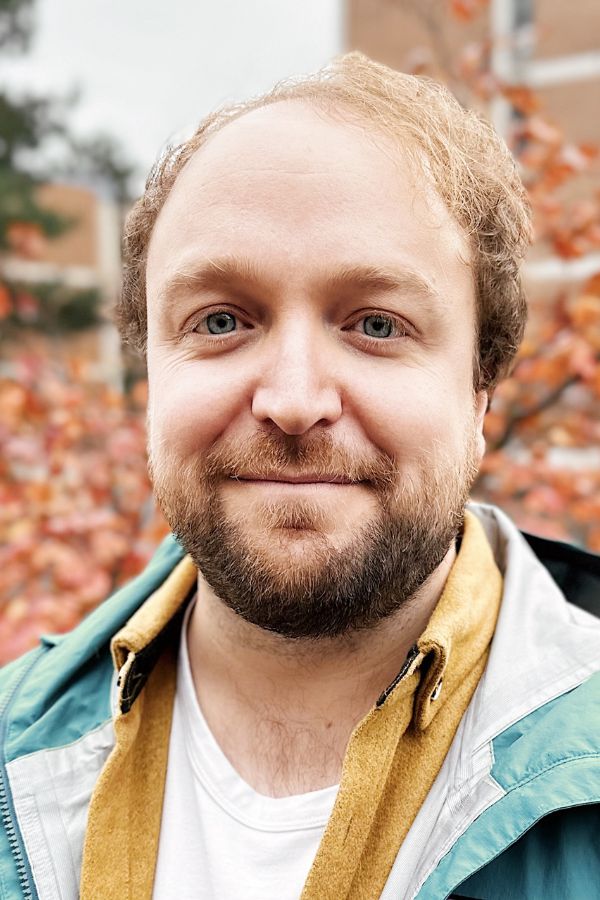
Inclusive care directly impacts the well-being of pediatric patients and their families. Aware of its importance, BC Children’s Hospital Research Institute (BCCHR) has helped lead changes that can improve health equity and ensure high-quality care. In two recent studies, BCCHR researchers investigated language barriers to care in Canada. Today, in the first of a two-part series, you’ll learn about research that examined how medical interpreter services are accessed and used by residents in pediatric training centres across the country.
“We not only investigated how these services are used, but also the residents’ perception of their use when caring for patients and families whose preferred language is not English or French,” says Dr. Matthew Carwana, investigator at BCCHR and clinical assistant professor in the Department of Pediatrics at the University of British Columbia. Inclusive care comprises a patient’s right to communicate in the language they’re most comfortable with, even if it’s not the official language in that environment. Published in the Postgraduate Medical Journal, this cross-sectional study is the first of its kind in Canada.
“I’m proud that BCCHR is helping lead inclusive pediatric research through initiatives like language barrier studies.”
An increasing number of clinicians and researchers have recognized that language can be a barrier to high-quality care. Research shows that, in Canada, interactions between health-care providers and patients with non-English or French language preferences (NEFLP) can result in trouble understanding medical information, fewer opportunities to build a relationship, and increased chance of medical error. “Provincial Health Services Authority and BC Children’s Hospital have been really proactive,” says Dr. Carwana, who is also a general pediatrician at the Hospital and one of the senior authors of the study. “For many years, we’ve had access to high-quality, on-demand interpreter services to provide the best possible care to NEFLP patients.”

While having access to interpreters specifically trained in medical jargon is key to support communication with NEFLP patients, it’s also important to ensure that health-care workers are regularly using these services. This study started as a residency project by Dr. Sarah Peters, who was overseen by Dr. Carwana. His research program investigates ways of addressing the disadvantages experienced by marginalized pediatric patients due to social and structural determinants of health. “Since Dr. Peters was a resident at the time — and because residency is such a formative stage in shaping future health-care providers — we decided to focus on residents’ experiences with accessing language interpretation services,” he says.
For this study, an anonymous survey was distributed to all the residents enrolled in Canadian pediatric hospitals with established training programs. “We found that there’s good availability of language interpretation services across Canada, but their use is inconsistent,” says Dr. Carwana. For example, the respondents identified themselves as high users of interpreters when discussing consent or medical history with NEFLP patients, but low users when doing physical exams and procedures on them. “We wonder if there’s capacity to improve consistency across the different tasks performed on a regular basis by pediatric residents.”

Overall, the study found evidence that medical residents in Canada lack the training and confidence to provide care to NEFLP pediatric patients using an interpreter. Additionally, the residents also reported that the use of interpreter services only somewhat improved their self-perceived abilities to provide better care. “I see interpretation as the tip of the iceberg in that it’s easier to address it, compared with other aspects of language barrier,” says Dr. Carwana, acknowledging that interpretation and cross-cultural translation are not the same. “We’re aware that translating medical information verbatim between two completely different languages misses cultural contexts, but we need to make sure that we’re doing the best possible job across the country to address the tip of the iceberg first.”
At BC Children’s Hospital, language interpretation services are available 24/7 to support communication between clinicians and hospitalized NEFLP children. “A large number of patients and families visiting our hospital have a language preference that’s different from English or French,” says Dr. Carwana.
“Every person has the right to high-quality health care because that’s a fundamental human right. If we approach health care from an equity perspective, we’ll make our communities better and everyone will feel welcome.”
According to Dr. Carwana, it’s unrealistic to expect everyone visiting or living in a foreign country to be able to fully communicate in a new language. Additionally, the words used in health care can be more complex and nuanced than the basic vocabulary. “If we’re travelling to a place with a language that doesn’t match what we speak and we need to go to a hospital, for example, wouldn’t we want mechanisms in place to ensure the team looking after us can understand what we’re experiencing and address our concerns?” he says.
This study highlights the need for pediatric training programs to develop curriculum content that targets safe and equitable care — particularly effective interpreter use — while reviewing other aspects of cultural awareness and safety. Targeted training can create opportunities to discuss evidence-based strategies that help improve communication with NEFLP families. “The largest barrier to developing this type of curriculum has been lack of awareness, but education is increasingly emphasizing elements of cultural safety,” says Dr. Carwana.

More research is needed to investigate practitioner- and system-specific factors that prevent residents from performing at their best when working with NEFLP pediatric patients and families, and also to find out what they think is missing from their care. “Our study illustrates the importance of improving culturally safe care. Reassuringly, there are now several language barrier studies being conducted in Canada by members of the Paediatric Inpatient Research Network,” says Dr. Carwana. “As we continue to train new generations, improvements will continue to advance health care.”
In the second of our two-part series, you’ll learn about the BCCHR study that used a national survey of pediatric health researchers to look into strategies that can reduce language barriers in clinical research.




